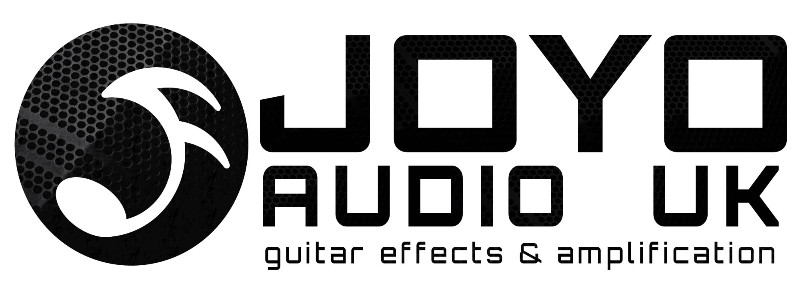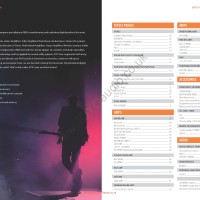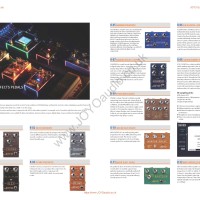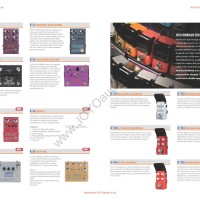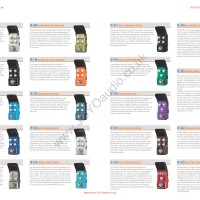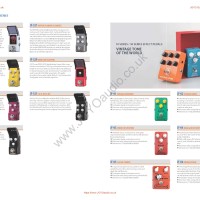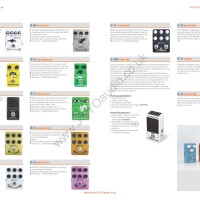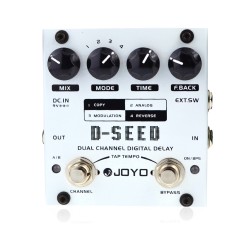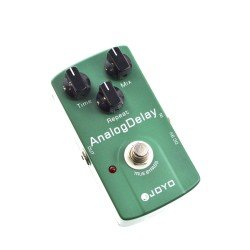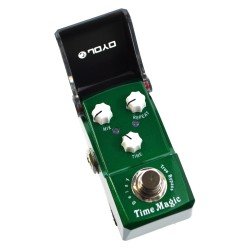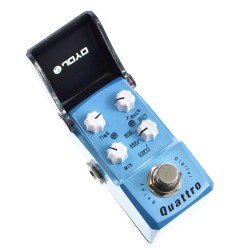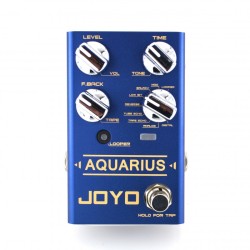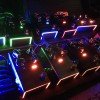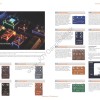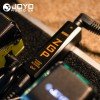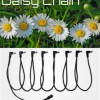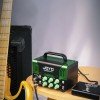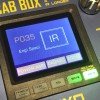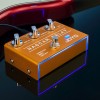What’s the Difference between Analog and Digital Delay Guitar Effect Pedals?

I often get asked what the difference is between these 2 delay guitar effect pedal types. There are two kinds of JOYO delay pedals available:
1. Analog delay effect pedals
2. Digital delay effect pedals.
>> PLEASE VISIT THE OFFICIAL JOYO STORE <<
>> View all the JOYO Delay pedals.
Both have their strengths, good for doing different things, they are great on guitar, bass or acoustic. If you can plug it in then anything can be used without delay. The delay is without a doubt at home on a guitarist’s pedalboard, every electronic instrument, studio, the singer must have one in their arsenal. So what are they?
Analogue delay pedals
>> PLEASE VISIT THE OFFICIAL JOYO STORE <<
Analogue delay pedals usually rely on a design bucket-brigade device circuit to process the sound input.
A Bucket Brigade Device (or BBD) is an analogue circuit contained within a small chip that delays the incoming guitar signal. The BBD chip slows down or “delays” the signal as it takes more time to pass through the BBD. Adjusting the time and repeating with the analogue circuit in place, the repeat of an analogue delay, is considered a bit warmer. It will tend to gradually break up with each step as the repeats are made.
Due to a limitation of BBD chip design, analogue delay pedals tend to offer shorter maximum delay times than digital delays.
The JOYO Jf-33 and Nascar delay both use BBD chips and a popular pedal for those who like to keep it analogue.
Digital delay pedals
>> PLEASE VISIT THE OFFICIAL JOYO STORE <<
DSP or digital signal processing, use DSP chips to create their echo effects. This means that they can be as coloured or transparent, or long or short, as the designer/engineer decides to make them.
Digital pedals offer much more flexibility and features than analogue delay pedals could offer. Pedals with midi are digital.
Which type of delay pedal you prefer is a matter of taste. Analogue delays can sound extremely musical and pleasing, some would say they are more natural and warm. Some guitarists don’t like their signal to be converted to digital if they can help it.
Digital delays offer immense amounts of flexibility and can offer a crisper cleaner delay by using Digital processing.
So which do you prefer? Or do you have both analogue and delay effects on your pedalboard?
>> PLEASE VISIT THE OFFICIAL JOYO STORE <<
Don't forget, mixing analogue and digital pedals could cause noise if you use a rubbish power supply or a daisy chain. Mixing pedals of analogue and digital will require a decent multi-power supply with filters on the outputs like the JP-02, or I would suggest using a ZGP noise filter.
A regulated and filtered power supply ensures that the current is drawn by each pedal at the right rate, these different flow rates can cause interference with each other, because they do and they will.
